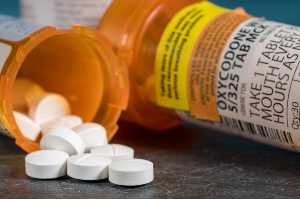 The federal government designates controlled substance classification. Substances from any one of these classes can be misused or abused and contain a mix of prescription medications and street drugs. Enforcement guidelines at the federal and state levels are meant to help regulate and negate improper use.
The federal government designates controlled substance classification. Substances from any one of these classes can be misused or abused and contain a mix of prescription medications and street drugs. Enforcement guidelines at the federal and state levels are meant to help regulate and negate improper use.
Rubin, Glickman, Steinberg & Gifford has a cache of experienced criminal defense attorneys well versed in cases dealing with controlled substances from all classes. From summary offenses to felony charges, our Pennsylvania criminal defense attorneys have mounted numerous successful defenses where controlled substances have been factors.
What Are the Five Controlled Substance Classifications?
The five classifications of controlled substances are narcotics, anabolic steroids, depressants, stimulants and hallucinogens.
Narcotics
Narcotics are psychoactive compounds commonly known as opiates. They are typically used for pain relief because they bind to the central nervous system, blocking out pain receptors. They also sometimes dull the senses and cause behavioral changes in users. Prescription medication examples of narcotics include Codeine, Morphine, Fentanyl, Vicodin and OxyContin. Heroin is an example of a street drug narcotic.
Narcotics come in capsule, tablet, liquid or powder form and may be consumed orally or intravenously. Narcotics are also sometimes smoked or sniffed and may be ingested via skin patches. The effects of narcotics include drowsiness, inability to concentrate, apathy, reduced anxiety and pain relief.
Some narcotics are included in the Schedule designations (ranging from I through V) named by the Drug Enforcement Agency (DEA). Schedule categorization depends on the potential for medical use, dependency profile, abuse considerations and safety. For example, heroin is a Schedule I drug because it has no medical benefit in the U.S.
Anabolic Steroids
Anabolic steroids are androgens made with synthetic materials as well as testosterone for performance enhancement. Anabolic steroids have a medical purpose but are often used for off-label purposes. They are especially popular with athletes and bodybuilders to help with building muscle and improving athletic performance.
Anabolic steroids come in cream, gel, tablet or capsule form. Anabolic steroids may be used orally, intravenously or via skin patch. Users may ingest up to 100 times higher doses than those medically prescribed to get maximum impact.
Depressants
Depressants are controlled substances that relieve anxiety or tension and sometimes cause sleepiness or drowsiness. Examples include Xanax, Rohypnol (the “date rape drug”), Valium and Ambien. They are commonly prescribed for pain control, panic attacks and insomnia.
Depressants come in various forms, including capsules or tablets and liquid syrups. Side effects of depressants include slow reaction time, impaired judgment and reduced awareness.
Stimulants
Stimulants include a combination of street drugs and medications. For instance, Ritalin and Adderall are classified as stimulants and are medications prescribed to treat a host of health issues, including attention-deficit hyperactivity disorder (ADHD). Cocaine and methamphetamine, also known as coke and speed, respectively, are street drugs classified as stimulants.
Stimulants come in tablet or capsule, powder, rock and liquid forms. Depending on the user and stimulant form, they can be taken orally, smoked, snorted or injected. Stimulant effects include improvements in mental and physical performance, reduced appetite, a sense of well-being or exhilaration and extended periods of wakefulness.
Some stimulants, such as cocaine or methamphetamine, are classified as Schedule I drugs because they have no medical value in the U.S.
Hallucinogens
Hallucinogens are both naturally occurring and synthetic substances, depending on the type. Common examples of hallucinogens include mushrooms, LSD and MDMA. Hallucinogens alter reality for users, impacting everything from behavior to mood. They are most commonly found in tablet form, though acid is sometimes ingested on a small slip of paper.
Many of the substances in this category are considered Schedule I drugs per the DEA, which means they currently have no medical use in the U.S. and have a high likelihood of abuse.
Understanding controlled substance categories and their classification and schedule status can help to better understand possible penalties for possession or delivery.
Pennsylvania Controlled Substance Penalties
Working with a Pennsylvania criminal defense attorney may help avoid some of the stiff criminal penalties for controlled substance crimes in this state. For example, the maximum penalty for a first offender charged with possession of narcotics could be incarceration for up to a year. A first offender charged with possession with the intent to deliver heroin in Pennsylvania faces 15 years and a $250,000 fine.
Hire a Pennsylvania Criminal Defense Attorney for Controlled Substance Cases
Controlled substance cases are not always so cut-and-dried. They are often nuanced matters that require the strategic finesse of a qualified Pennsylvania criminal defense attorney. We are not here to judge. Our attorneys assist you in exhausting all legal avenues to resolve your case to your satisfaction.
For more than 65 years, Rubin, Glickman, Steinberg & Gifford has helped countless individuals in and around Southeastern Pennsylvania who have been baselessly accused of crimes involving controlled substances. Choosing the best representation is the key to a successful outcome, a fact to which many of our clients can attest. Call (215) 798-7081 or contact us here for a free consultation.








